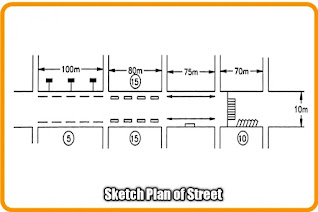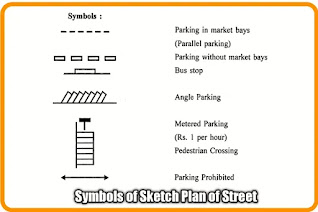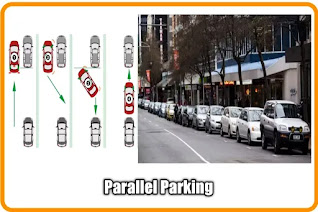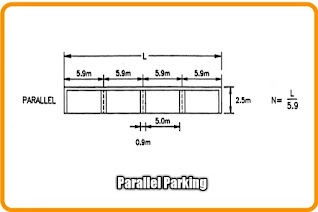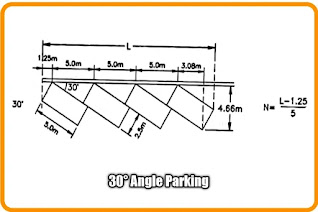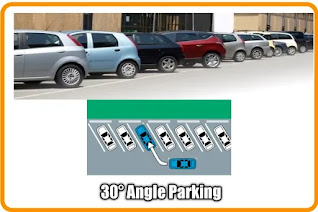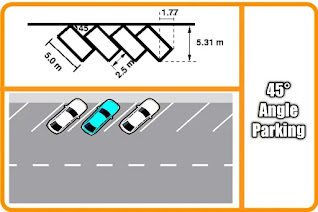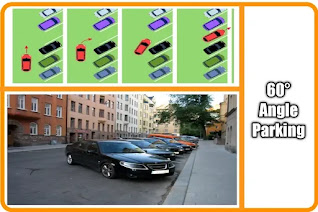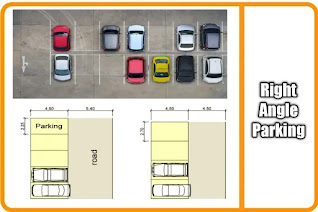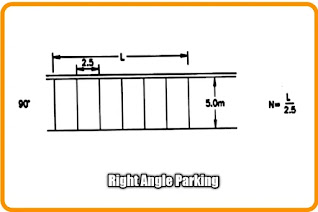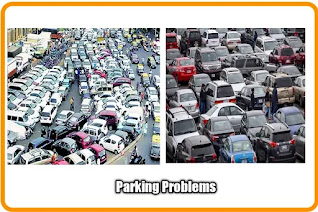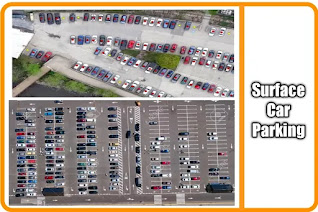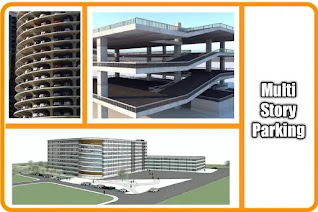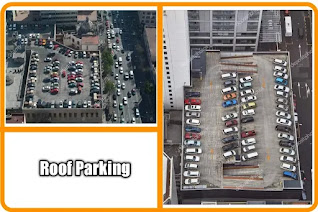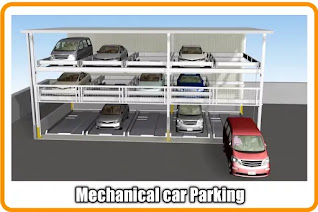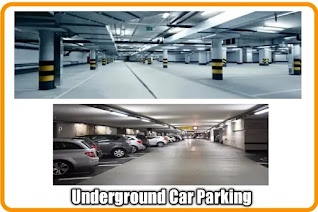WHY PARKING STUDY?
The enormous increase in vehicles has created the need for parking spaces in metropolitan cities. In industrial, commercial, and residential places with multi-storeyed buildings, parking demand is particularly high. A parking study is performed to determine location, use, and adequacy of existing parking facilities. in this article, we will also see types of parking which are widely used in all countries.
The Object of Parking Study Is
■ To obtain information regarding demand for parking spaces.
■ For improvement and regulation of existing parking facilities.
■ For future development plans.
■ The demand for parking space
■ To decide about pay parking.
Some Definitions :
1. Parking Accumulation
The total number of vehicles parked in an area at a specified moment.
The curve of parking accumulation for a typical day is shown in fig. 2.20.
2. Parking Volume :
The number of vehicles parked in a particular area over a given period of time. It is usually measured in vehicles per day.
3. Parking Load :
The area under the parking accumulation curve during a specified period.
For example, In fig. 2.20, the hatched area represents the parking load in vehicle – hour for a period of hours from 6 AM. to 10 AM.
4. Parking Duration :
The length of time spent by a vehicle in a parking space.
5. Parking Index :
Percentage of parking bays, actually occupied by parked vehicles as compared to the theoretical number of bays available.
Parking index =Number of bays occupied / Theoretical number of bays available
Types of Parking Study Surveys :
The type of parking survey to be conducted for formulating a comprehensive parking plan for an area can be very detailed in scope. The data collected and the degree of sophistication employed depends upon the funds available.
The Various Parking Surveys Usually Conducted Are :
(i) Parking space inventory
(ii) Parking usage survey by patrol
(iii) Questionnaire type parking usage survey
(iv) Cordon count
(i) Parking Space Inventory :
The very first step in a parking survey is to collect the data regarding the amount, type, and location of space actually available for parking in an area. The area to be surveyed should first be delineated. The central business area is usually the area where parking is needed. The area surrounding the central business place where the parking spills over should also be included in the survey.
The survey area is then subdivided on a street – by – street basis and subdivisions marked on a map. Sketch plans of the streets are’ then prepared. The data on parking facilities should be recorded on the sketch plans using suitable symbols.
The items to be recorded on sketch plans are :
■ The total length of kerb
■ Number of parking spaces provided in the street
■ Street width
■Location of bus stops, bus bays, pedestrian crossing, fire hydrants, etc.
■Traffic measures like prohibited turns, one-way traffic, the exclusive bus lane, etc.
■ Private streets
■ Vacant or unused land suitable for new parking.
A typical sketch plan for a street with the above information recorded is shown in fig.
Off-street parking facilities should be recorded separately, indicating the type, capacity, parking pattern, parking charges, entrances, and exits.
(ii) Parking Usage Survey By Patrol :
The purpose of parking usage survey is to obtain data on the extent of usage of parking spaces. The survey will include counts of parked vehicles at regular intervals through a period, covering both the morning and evening peak period, and the parking accumulation and turn-over. The survey can be for on-street or off-street parking.
The method consists of making periodic observations of parked vehicles on each patrol. For off-street observations, the entire parking space can be patrolled or the entrances and exits may be observed simultaneously.
Mapping The Street System :
The first step is to prepare a map of the street system that will be covered by the patrol, showing therein subdivision into sections. Street junctions make convenient points for determining the sections.
The recording can be for both sides of the road or separately for each side. The map and forms should clearly show the direction of travel by the patrolman and the sides where observations are to be recorded.
Frequency of Patrol :
Though more frequent patrol result in more accurate data, the fieldwork and subsequent analysis becomes more tedious.
Method of Observation :
Normally patrols are on foot, but where vehicles are not parked to close to one another, a moving car may also be used. As an aid, a tape recorder may be used to record the registration numbers of vehicles.
Timing of Survey :
The survey could be done on a typical week or day, free from factors likely to result in non representative data. The period of the survey is usually 10 to 12 hours, so as to cover the arrival and departure of commuters and shoppers.
(iii) Questionnaire Type Parking Usage Survey :
This type of parking survey involves interviews with the drivers who use the parking facilities. As a result it is possible to collect the information on the extent to which the existing facilities are being used, the journey purposes of car parkers, the parking demand at different prices, etc.
The information collected should include :
■ Address of origin of the trip
■ Trip purpose
■ Time of departure from the parking place
■ Type of parking space, etc.
■ Address of destination of the trip
■Time of arrival at the parking place
■Type of vehicle
TYPES OF PARKING :
There are basically two main types of parking.
1) On-Street Parking
2) Off-Street Parking
Let’s discuss all types of parking one by one.
1) ON-STREET PARKING
In this type, the vehicles are parked near the edge of curb of the road. Thus, it is also called Kerb parking.
Methods of On-Street Parking :
(i) Parallel parking
(ii) 30° angle parking
(iii) 45° angle parking
(iv) 60° angle parking
(v) Right angle parking
(i) Parallel Parking
Parallel parking consumes the maximum curb length which decreases with an increase in the angle of parking. The minimum kerb length is consumed by right-angle parking, which accommodates nearly 2 times the number of vehicles as parallel parking.
But, the parallel parking makes the least use of the width of the street, and this is an important consideration in narrow streets. In the case of right-angle parking, the maximum road width is utilized.
From the viewpoint of maneuverability angle, parking seems to be better than parallel parking which usually involves a backing motion. Delay to traffic is minimum with angle parking.
Thus, it is recommended that in general parallel parking should be preferred on the streets. On exceptionally wide (wider than 20 m) and low volume streets, parallel parking may be provided.
That’s why parallel parking is best parking in all types of parking in on street parking.
(ii) 30° Angle Parking
In these types of parking one side of the vehicles are place at the angle of 30 degrees with respect to curb.
(iii) 45° Angle Parking
In these types of parking one side of vehicles are place at the angle of 45 degrees with respect to curb.
(iv) 60° Angle Parking
In these types of parking one side of vehicles are place at the angle of 60 degrees with respect to curb.
(v) Right Angle Parking
In these types of parking one side of vehicles are place at the angle of 90 degrees with respect to curb.
Parking Prohibition
It is desirable to prohibit parking at certain locations and for a period to ensure safety and convenience.
(i) Near intersections
(ii) Narrow streets
(iii) Pedestrian crossings
(iv) Near structures like a bridge, tunnels, etc.
(v) In front of entrance driveways leading to houses and buildings.
OFF-STREET PARKING:
In this type of parking, a special area is prepared so that its reduce traffic on on-street parking.
Need For Off-Street Parking :
In case of on-street parking, vehicles are parked near the edge or curb of the road which may create many problems like congestion, accidents, etc. To overcome these difficulties, off-street parking are designed. The main purpose of off-street parking is to prevent congestion of the public right of way and to promote the safety and general welfare of the people.
Types of Off Street Parking :
(i) Surface car parks
(ii) Multi-storey parks
(iii) Roof parks
(iv) Mechanical car parks
(v) Underground car parks
Since these facilities are costly to provide and maintain, a comprehensive study should be done before planning such facilities.
(i) Surface Car Parking:
Surface car parks, properly located and developed on a piece of vacant land or surrounding an office complex or supermarket, are very popular with the motorists. A stall size of 2.5 m x 5.0 m is probably adequate for Indian conditions.
If the surface car park is to be operated with a fee-charging system, there should be arrangement for collecting the fees.
In this type of parking generally area required more then other parking so its used when widely area is available.
(ii) Multi-Storey Car Parking :
Surface car parking consume too much of the precious land in the heart of the city and are not, therefore, always feasible. In such cases multi-story car parks are an alternative choice.
Multi-story car parking has become common and popular in megacities like Mumbai, Delhi, Chennai, Bangalore, etc.
Multi-story car parks are designed for a capacity of about 400 to 500 cars. About five floors of parking is the upper limit as a large number of floors tends to increase the time for unparking the car.
In this type of parking generally area required is less compare to surface car parking because we have advantages of third dimension ( Hight ).
Some of the desirable standards for designing of the multi-story car parks are :
■ The gradient of a ramp: 1 in 10
■ Clear height between floors: 2.1 m
■ Parking stall dimensions: 2.5 m x 5.0 m
■ Inside radius of curves: 7 m
■ Width of traffic lane: 3.75 m
■ The gradient of sloping floors: not steeper than 1 in 20.
■ Loading standards : 400 kg/Sq.m (4 kN/sq.m)
(iii) Roof Parking :
Parking of vehicles on rooftops is a very popular method of solving the parking problems in many cities. Access ramps or mechanical lifts provide the necessary access to the roofs. The rooftop is specially designed to carry the road of parked vehicles.
This type of parking are not commonly used in all country but they are adopted in U.K.
(iv) Mechanical Car Parking :
Mechanical car parks provide for the lifting of cars from floor to floor by means of a lift and transfer of cars to and from the parking stall by means of mechanically operated transfer dollies or cradles.
Since the ramps and aisles are eliminated in this system, it is more economical in space as compared to the ramped system multi-story parking. The main disadvantage of this system is the higher cost of maintenance and the possibility of breakdown due to mechanical or power failure.
This type of parking is widely used in indrustrial areas because they are easily available and they are movable.
(v) Underground Car Parking :
The main advantage of underground car park is the least intrusion they cause to the aesthetics of a place. An excellent example is the underground parking below Hyde park in
London and in Connaught Place in New Delhi.
These types of parking can be built in the basement of any multi storeyed building or below an open space. Since the work involves large quantities of excavation, construction of retaining walls, ventilation and lighting, such car parks tend to be very costly.
I Hope You Like Our Article “10 Types of Parking And How To carry Out Parking Study In Traffic Engineering ?” Don’t be Cheap To Share This Article with your Friends.




